Over the past two decades, organizations have widely adopted some of the Agile best practices to accelerate the delivery of value. Agile teams demonstrate greater efficiency, produce superior products, and achieve higher customer satisfaction than traditional development teams.
As the Japanese concept "Shu-Ha-Ri" suggests, you should first obey the rules (shu), gradually detach from them (ha) and then look to separate yourself completely (ri). That's why, as a start, there are some Agile practices you should be aware of to boost your project management process in a knowledge work environment.
To better structure the information, let's map some of the best Agile practices to three of the main phases in project management: planning, execution, and monitoring.
Why Should Organizations Implement Agile and Have Agile Teams?
The Agile approach greatly emphasizes teamwork, with collaborative efforts being fundamental to its success. Agile teams function cohesively, reaping the benefits of working together and achieving a higher project success rate. This is made possible through the team's exceptional communication skills, allowing seamless collaboration.
Implementing Agile best practices also leads to increased efficiency, as it provides teams with the necessary tools to break down complex projects into more manageable work items that can be tackled easily. This approach ensures that team members are always engaged and motivated, with immediate feedback from short iterations as a constant reminder of the progress achieved.
Moreover, the Agile approach fosters a sense of ownership among team members, as they can witness the results of their efforts in tangible ways. This serves as a powerful motivator, keeping team members committed to achieving the overarching objectives of the project.
What Are Agile Best Practices?
Agile best practices are a set of guidelines and techniques that are commonly used by Agile teams to achieve maximum efficiency and productivity in their delivery process.
These practices include regular meetings, self-organizing teams, and adopting a flexible and adaptive approach to change. Overall, Agile best practices aim to create a culture of continuous improvement and feedback, which helps teams deliver high-quality value quickly and efficiently.
Best Agile Practices from Kanban
Kanban is a popular Lean workflow management method for defining, managing, and improving services that deliver knowledge work. It helps you visualize work, maximize efficiency, and improve continuously. Work is represented on Kanban boards, allowing you to optimize work delivery across multiple teams and handle even the most complex projects in a single environment.
Originating from manufacturing, it later became a territory claimed by Agile software development teams. Recently, it started getting recognized by business units across various industries.
To ensure the successful implementation of Kanban in an Agile environment, it is recommended to adopt the following Kanban practices:
-
Visualizing the workflow: Creating a visual representation of the workflow helps to identify bottlenecks, visualize the flow of work, and make the work more transparent.
-
Limiting work in progress: Limiting the amount of work in progress helps to prevent multitasking and improve focus on completing one task at a time, thereby improving efficiency and reducing lead time.
-
Managing flow: Kanban aims to help optimize flow, which can be achieved by monitoring flow metrics, identifying and addressing bottlenecks, and continuously improving the workflow.
-
Making process policies explicit: Defining and communicating process policies clearly helps to ensure that everyone understands how work is supposed to be done, which reduces misunderstandings and promotes consistency.
-
Implementing feedback loops: Kanban emphasizes the importance of getting feedback from customers, stakeholders, and team members to identify improvement areas.
-
Improving collaboratively: Kanban is a continuous improvement process that encourages collaboration and experimentation to identify and solve problems, improve continuously, and evolve their processes to meet the needs of their customers better.
Businessmap is the most flexible software
to align work with company goals
Best Agile Practices from Scrum
Scrum is often regarded as one of the most popular Agile frameworks. Statistical data indicate that Scrum is still the leading Agile approach employed by 87% of organizations, followed by Kanban and Scrumban. (source: State of Agile)
Here are some of the recommended Agile best practices for implementing Scrum within an Agile environment:
-
Foster a collaborative environment. A recommended approach towards effective Scrum implementation is to foster a collaborative environment where the product backlog and product vision are co-created by the development team and stakeholders. This ensures a shared understanding and alignment between the two parties, thereby enhancing the chances of project success.
-
Hold daily stand-ups. Stand-up meetings are short meetings of team members to discuss project progress. These meetings are designed to be kept to a maximum of 15 minutes to ensure they are efficient and productive. Incorporating stand-up meetings into product or project management is an effective way to monitor progress and keep all team members informed of updates.
-
Use a daily burndown chart to track the progress of sprints. The burndown charts are a graphical representation of the work that has been accomplished in relation to the total work remaining against a given time frame.
-
Set communication guidelines for teams. Developing a communication strategy that includes essential guidelines for teams can ensure smooth and effective communication. This practice can be particularly valuable for remote teams as it promotes transparency in reaching team goals.
Best Agile Practices from Extreme Programming (XP)
Extreme Programming (XP) is a software development framework that emphasizes teamwork, communication, simplicity, and customer satisfaction. It is an Agile development approach involving continuous testing, integration, and delivery to ensure high-quality software that meets customer requirements. XP values include courage, communication, feedback, respect, and simplicity, and it emphasizes practices such as pair programming, test-driven development, and incremental design.
Some of the Agile best practices associated with Extreme Programming (XP) are:
-
Pair Programming: Two developers work together on the same code, taking turns writing and reviewing code.
-
Test-Driven Development (TDD): Write automated tests before writing the code.
-
Continuous Integration (CI): Merge all code changes into a central repository multiple times a day and run automated tests to detect and fix issues early.
-
Refactoring: Continuously improving the codebase by making small changes to improve its quality and maintainability.
-
Simple Design: Keep the design of the software as simple as possible to avoid unnecessary complexity.
-
On-Site Customer: Having a customer representative available to provide feedback and answer questions during development.
Best Agile Practices from the Lean Development Model
The fundamental concept of Lean project management involves the application of Lean manufacturing principles to various project management processes. These principles prioritize eliminating any activities or processes that don't contribute to the project's overall value.
There are several Agile best practices associated with the Lean development model, including:
-
Continuous Improvement: Continuous improvement involves constantly reviewing and improving processes to increase efficiency and eliminate waste.
-
Visual Management: This involves using visual aids such as Kanban boards, flowcharts, and other tools to help teams visualize work and identify bottlenecks.
-
Customer Collaboration: Lean development emphasizes working closely with customers to understand their needs and deliver value quickly.
-
Small Batches: To reduce waste and improve efficiency, work is done in small batches, with frequent feedback and adjustments.
-
Cross-functional Teams: Lean development encourages cross-functional teams that include members with diverse skills and backgrounds to improve collaboration and problem-solving.
What Are the Best Practices for Planning Using Agile?
Maybe you’ve heard that there is no planning in Agile. This statement is far away from the truth.
Without further ado, here are some of the primary Agile practices for planning projects:
- Plan on multiple levels and prioritize customer collaboration
- Cascade power downwards
- Use time ranges and probability
- Enable transparency by connecting planning and execution
Let’s go over each one of those points below.
1. Plan on Multiple Levels and Prioritize Customer Collaboration
One of the central Agile practices is to plan on multiple organizational levels, from strategic initiatives to individual tasks. As opposed to having one big planning phase, in Agile, teams spread it alongside the project's course and plan only for the short term. Once a deliverable is released to the customer, the planning process can start again.

Furthermore, Agile prioritizes customer collaboration above everything else because this is what dictates the plan. In other words, Agile teams design their plans to focus on outcomes that produce customer value instead of outputs.
To do this in practice, the Agile approach to project management emphasizes regular customer synchronization points in the process. Those are extremely important in an uncertain environment because they enable fast feedback and feed valuable information to the next portion of the project plan.
This practice of planning on multiple levels and prioritizing customer collaboration creates a highly adaptive planning process. Whenever there is a change in requirements, every level sends information to the one above it. This allows both teams and managers to apply small tweaks to their plans instead of large reworks, which lead to project failures.
2. Cascade Power Downwards
For the Agile planning process to function correctly, management in organizations needs to adopt cascading power downwards. This means that team members should be encouraged to create their own plans based on some coarse-grained details only.
In other words, managers in Agile are responsible for setting a product or service vision, making sure it's well-understood, and engaging in high-level planning. However, when it comes to developing a fine-grained path to achieving that vision, this is where individual team members become actively involved in the process as opposed to traditional project management.
This approach has several benefits over the conventional one.
It involves the actual subject matter experts (team members), which increases their sense of belonging and produces more accurate plans. Furthermore, it enables responsiveness to changes as the high-level plans are only directions of how things should look instead of prescriptive documents.
3. Use Time Ranges and Probability
Another Agile planning practice is to plan in ranges instead of specific dates.
Traditionally, project managers look to predict the future based on deterministic estimations. When talking about a knowledge work environment, this approach is hugely flawed as things move quickly, and the work is rarely the same. Therefore, promising that a deliverable will be done by a specific date isn't realistic.
To tackle this problem, Agile teams use time ranges and attach a specific probability based on their historical data. For example, it's much more realistic to say that a feature will be done between 5 and 8 days with an 85% probability than to make exact date promises.
To put this approach into practice, you can use a forecasting tool such as a Monte Carlo Simulation. Based on a statistical analysis of your past performance, the tool can be very useful in determining the probability with a project or a deliverable will be completed at a certain point in time.
 Example of Monte Carlo: How Many
Example of Monte Carlo: How Many
Here we should mention that the primary key to success when using Monte Carlo Simulations is your workflow's stability. We will explain how to achieve that in the next section.
4. Enable Transparency by Connecting Planning and Execution
Last but not least, you should aim to create transparency in the whole project management process by bringing together planning and execution. This will ensure that you have visibility of the whole picture, easily track the progress, and react to changes on time.
To do this in practice, you should look to connect multiple workflows. For example, you could have a workflow where you plan your projects and one where you visualize the individual tasks that every team member is responsible for.
 Connecting projects with individual tasks on a Kanban board
Connecting projects with individual tasks on a Kanban board
Of course, the structure might be completely different based on your process and project scope. Nevertheless, what's important here is the idea of full transparency in the process and measuring plans against their actual execution in real-time.
As a result, you will create an open environment and improve the collaboration on the project between team members and other relevant stakeholders. You can even apply the concept to scale Agile to portfolio management.
Businessmap is the most flexible software
to align work with company goals
What Are the Best Agile Practices for Work Execution?
This section will discuss some of the best Agile practices related to executing projects in a knowledge work environment.
They are the following:
- Visualize Workflow
- Limit WIP and Manage Queues
- Reduce Batch Size of Work Items
1. Visualize Workflow
Even though workflow visualization isn't something hard to accomplish, it is one of the most effective Agile practices.
Unlike manufacturing, knowledge work is practically invisible, so it's very hard to keep track and measure your process's effectiveness. That's why simply visualizing your work stages and items will enable you to react faster to emerging issues and improve the collaboration between your team members.
To do this in practice, you can use Kanban boards. A good practice is to apply the lean management technique "value stream mapping" to see how your team delivers customer value. With this information in mind, you can start optimizing your workflow by removing wasteful activities, re-structuring your board based on customer needs, spotting and alleviating bottlenecks, etc.
 Bottlenecks visualization on a Kanban board
Bottlenecks visualization on a Kanban board
10 Years Kanban Experience In 1 Free Book.
Project Manager's Guide to Kanban
Another great thing about visualization, and specifically Kanban boards, is that you can apply them across the entire company - from the management of multiple projects to multiple team's workflows. This will allow you to bring transparency at scale, one of the main themes when building an Agile organization.
Moreover, by connecting all of these boards, you will create an organizational structure where every layer regularly feeds with information the one above it or vice versa. As a result, whenever any emerging and unexpected changes occur, you will have the management system in place to take any necessary actions as soon as possible.
2. Limit WIP and Manage Queues
WIP stands for Work In Progress and is one of the essential measures in the Agile world. It represents work that has been started but not finished yet, which means that it has not accumulated any outcomes. Therefore, having a lot of work in progress is a waste.
That's why a useful Agile practice that comes from Kanban is to limit WIP to reduce waste and speed up the flow of the process. Applying this is extremely important in a knowledge work environment because it prevents context switching and enables team members to focus on finishing work instead of always starting a new one.
Limiting WIP happens easily with the help of a Kanban board where you can restrict how many work items can reside in a work stage/column at any given time.
 Visualization of WIP limits on a Kanban board
Visualization of WIP limits on a Kanban board
In addition to that, another practice that successful Agile teams use is to manage queues in their process instead of tracking timelines. If you think about it, this makes perfect sense because by making sure that long queues don't form, Agile project managers can reduce the cycle time of work items. Eventually, this automatically gives them control over timelines.
An excellent tool for managing queues is the application of WIP limits. You can restrict how many items can enter a waiting stage to form a pull system in your process where a task is started only when there is capacity available. As a result, this will lay the foundations of a stable and predictable value delivery process.
3. Reduce the Batch Size of Work Items
Working on small batches is another critical Agile practice when executing projects.
In fact, this is what enables the concept of frequent and continuous delivery in Agile project management.  Reducing batch sizes also helps teams decrease the possibility of having many work items linger in the work process for too long. This facilitates flow and enables timely customer delivery of what has been promised.
Reducing batch sizes also helps teams decrease the possibility of having many work items linger in the work process for too long. This facilitates flow and enables timely customer delivery of what has been promised.
As a rule of thumb, you should be aware that a very small batch size that doesn't produce value is also not preferable. The idea here is to find the sweet spot and determine what the smallest possible work item that can be successfully released for customer examination is.
What Are the Top Agile Practices for Monitoring?
The final section consists of Agile practices for monitoring projects. This point is an integral piece of the puzzle where Agile teams sync progress and seek continuous improvement.
Some of the best Agile monitoring practices are summarized below:
- Sync Progress Daily
- Track and Measure Flow Metrics
- Engage in Frequent Reviews
Let’s add more detail to each one of these practices.
1. Sync Progress Daily
One of the most common Agile practices is to daily sync progress on projects with other team members. This usually happens due to the daily stand-up meeting where the entire team stands in front of a physical or digital Kanban board (Kanban software) and engages in discussions about everything that has transpired since the last meeting.
The main objective here is for everybody to give a quick status update, so there is a mutual awareness of who's working on what and how the team is tracking against the plan. Furthermore, team members might need to escalate impediments to their flow in this meeting so necessary actions could be undertaken as fast as possible.
As a rule of thumb, you should keep the daily stand-up on point and below 15 minutes. Try not to turn it into an extensive status report or engage in lengthy discussions about emerging issues.
The idea here is that you sync progress as quickly as possible and return to your work. In case some of your team members have an issue, they should discuss it with a senior colleague privately outside the meeting.
Agile ceremonies aim to create an information flow of internal and external feedback collected from all teams. Holding them regularly helps teams and organizations react fast to clients’ and business changes.
2. Track and Measure Flow Metrics
Flow is the pinnacle to a stable process and predictable project delivery, so measuring flow metrics in Agile is another best practice.
Some of the most important flow metrics to track are WIP, cycle time, and throughput. Together, they will allow you to determine what can be done in the process and how long it will take, so you can better match demand with existing capabilities.
For example, with the help of charts such as the Cumulative Flow Diagram, Cycle Time Scatterplot, Heat Maps, etc., you will be equipped with the tools to measure the performance of your flow and collect historical data.
 Tools measuring workflow performance
Tools measuring workflow performance
As a result, you will be able to continuously track the demand and capacity levels in your system so you can begin to create a predictable workflow and give realistic forecasts for project delivery to your customers.
3. Engage in Frequent Reviews
Lastly, it's all about continuous improvement. That's why another helpful Agile practice is to implement regular feedback loops for reviewing your work processes.
 Feedback loops in Kanban
Feedback loops in Kanban
In Kanban, for example, we do that by engaging in a regular Service Delivery Review, which is usually held weekly or bi-weekly. There, our teams reflect on all the deliverables that they have released to the customer and incorporate both internal and external feedback.
This iterative process allows us to continuously improve our processes and quickly implement valuable lessons learned while the project is still active. As a result, you will be able to remain agile to any emerging changes so you can frequently meet customer expectations.
Businessmap is the most flexible software
to align work with company goals
In Summary
There isn’t a single best practice that you can implement and call your team or company “Agile”. Instead, you should adopt the Agile mindset first and then experiment to see what works best for you.
Still, you need a starting point. So, some of the best Agile practices related to planning, executing, and monitoring projects that you can implement are:
- Plan on multiple levels and prioritize customer collaboration
- Cascade power downwards
- Use time ranges and probability
- Enable transparency by connecting planning and execution
- Visualize workflow
- Limit WIP and manage queues
- Reduce the batch size of work items
- Sync progress daily
- Track and measure flow metrics
- Engage in frequent reviews






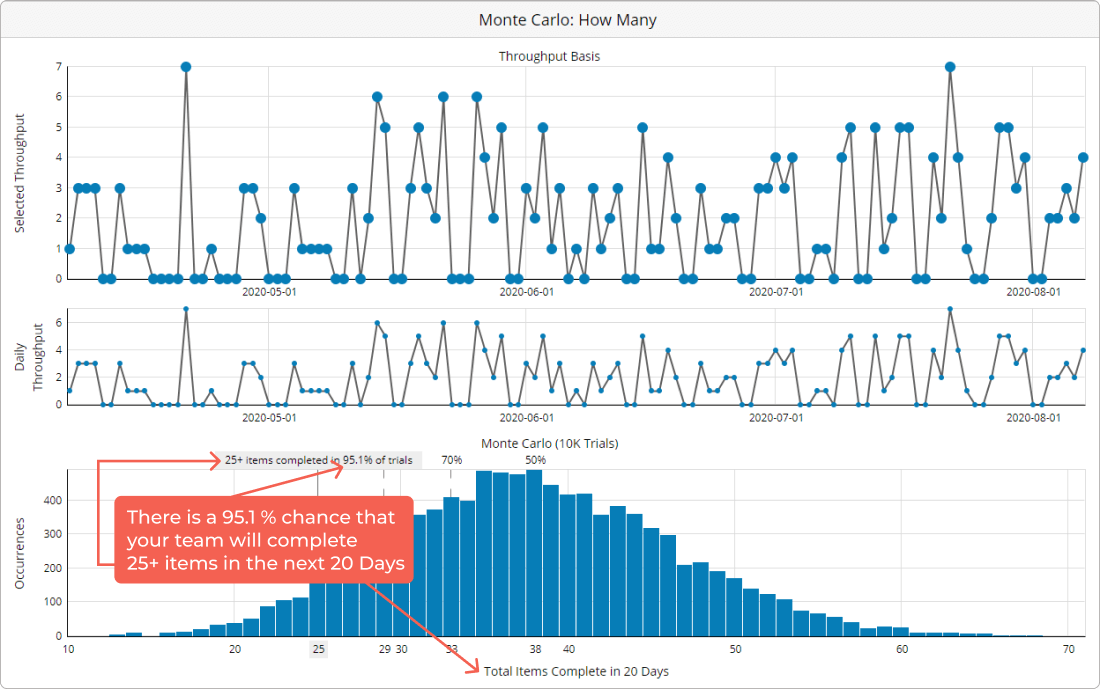 Example of Monte Carlo: How Many
Example of Monte Carlo: How Many 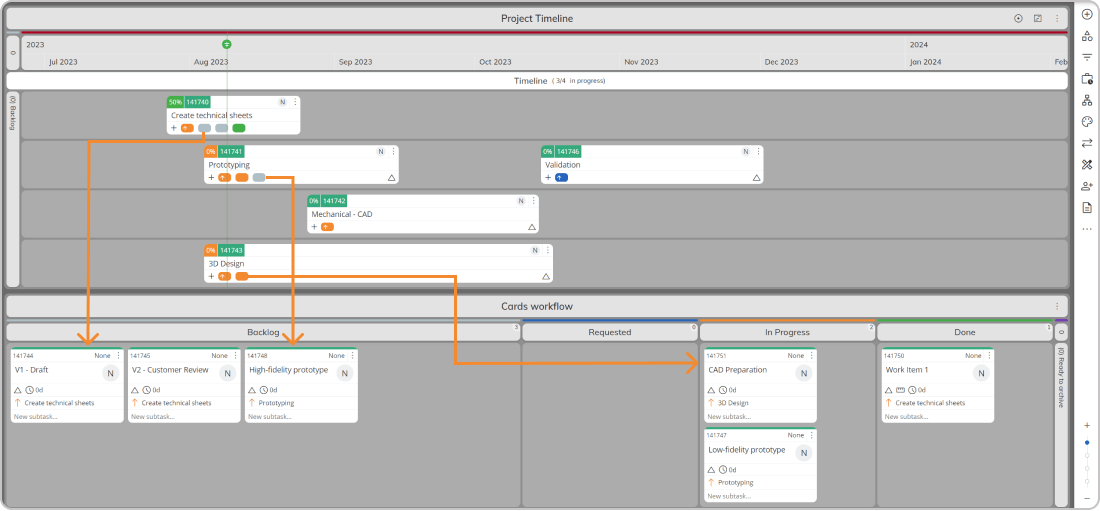 Connecting projects with individual tasks on a Kanban board
Connecting projects with individual tasks on a Kanban board Bottlenecks visualization on a Kanban board
Bottlenecks visualization on a Kanban board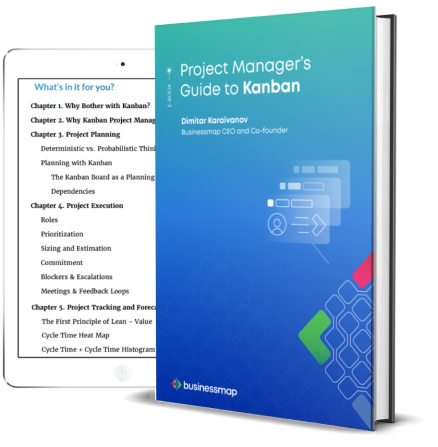
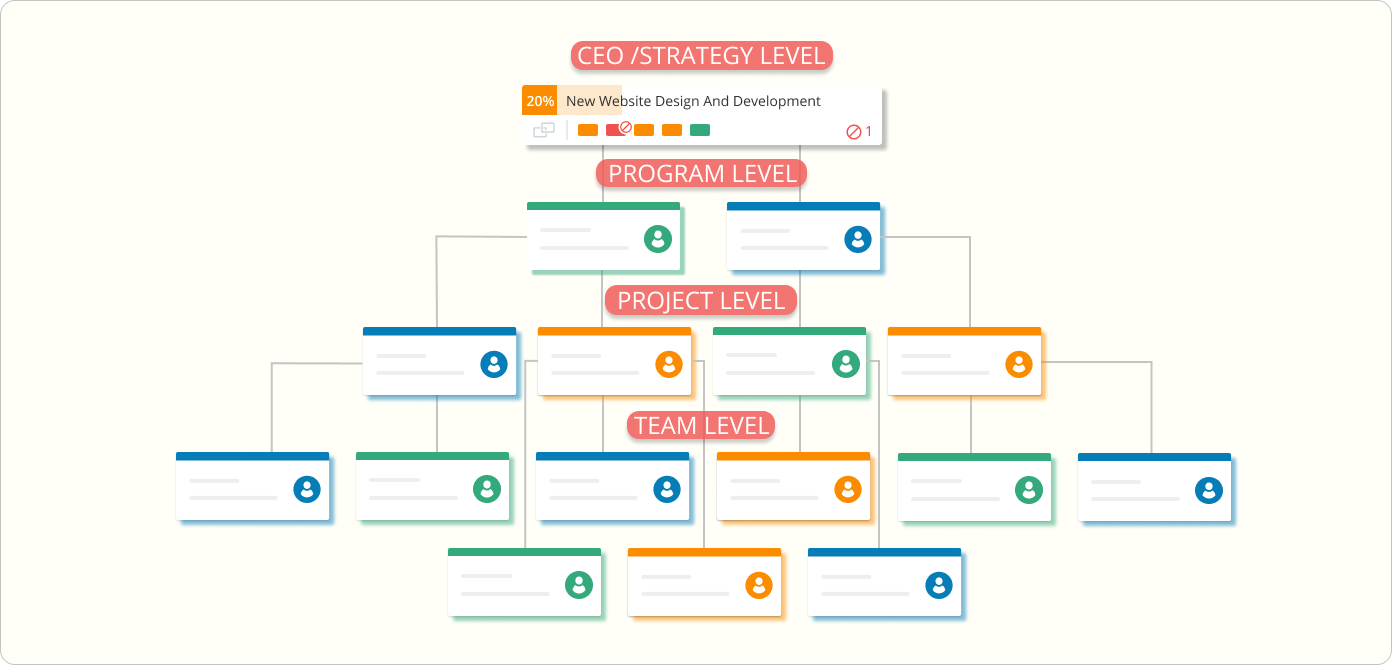
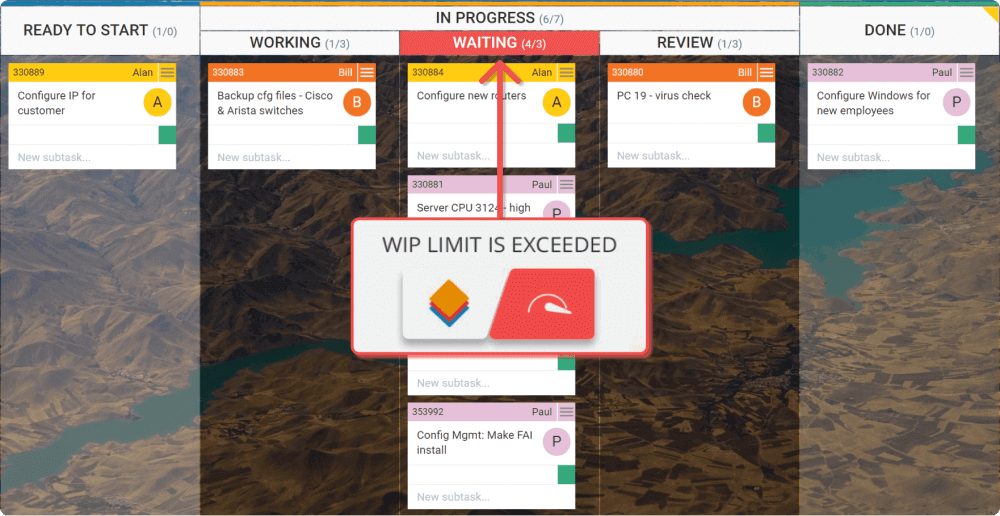 Visualization of WIP limits on a Kanban board
Visualization of WIP limits on a Kanban board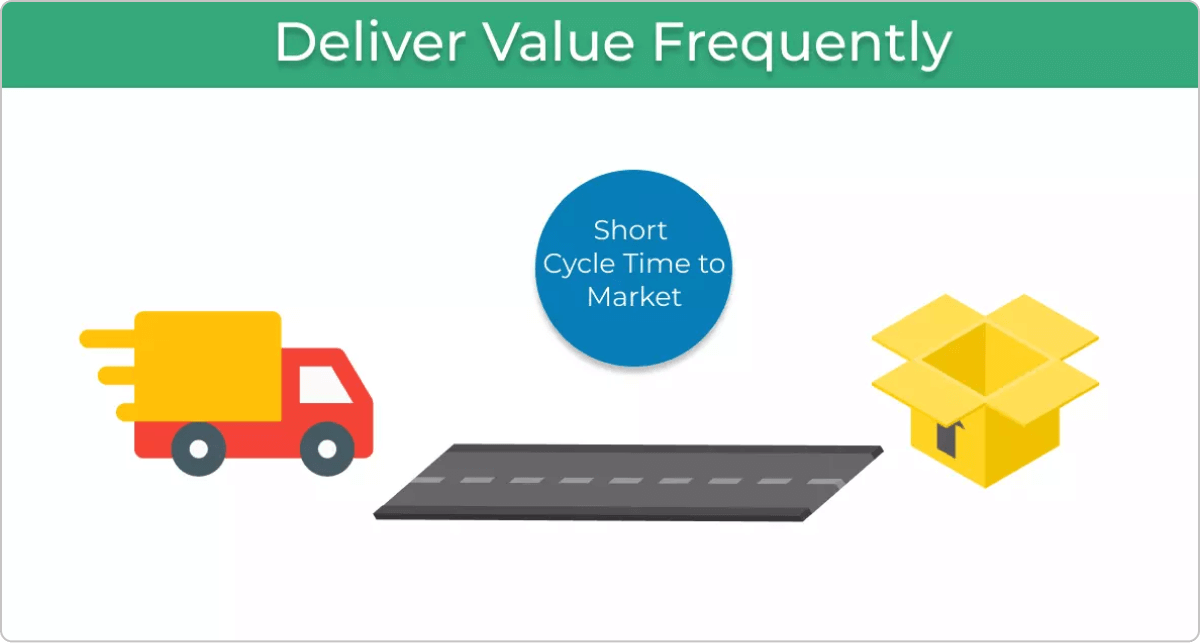 Reducing batch sizes also helps teams decrease the possibility of having many work items linger in the work process for too long. This facilitates flow and enables timely customer delivery of what has been promised.
Reducing batch sizes also helps teams decrease the possibility of having many work items linger in the work process for too long. This facilitates flow and enables timely customer delivery of what has been promised.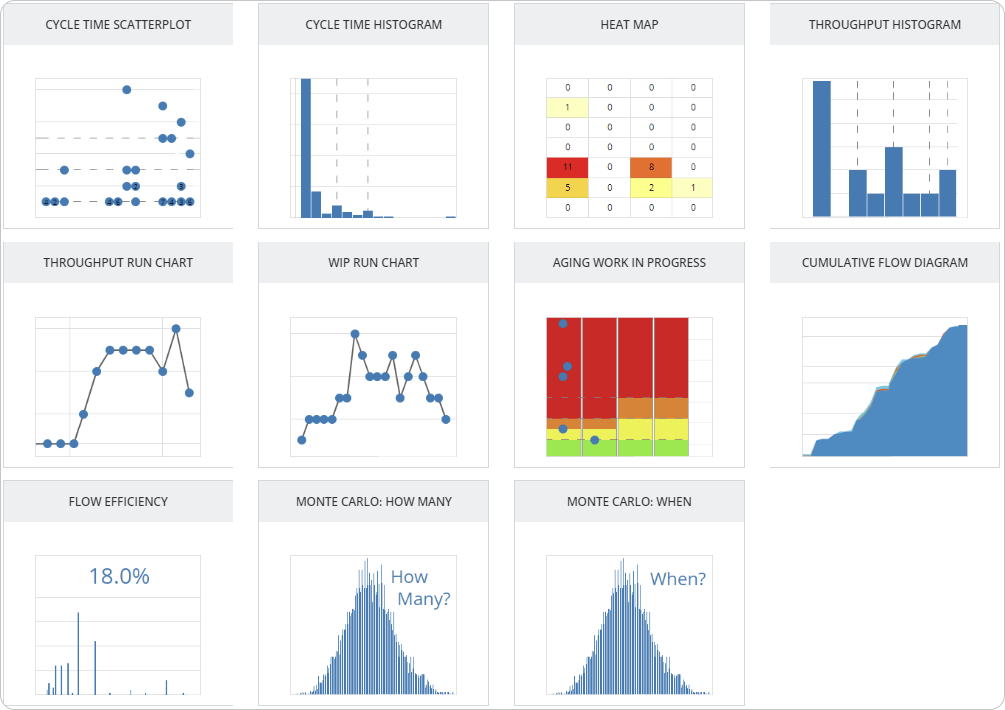 Tools measuring workflow performance
Tools measuring workflow performance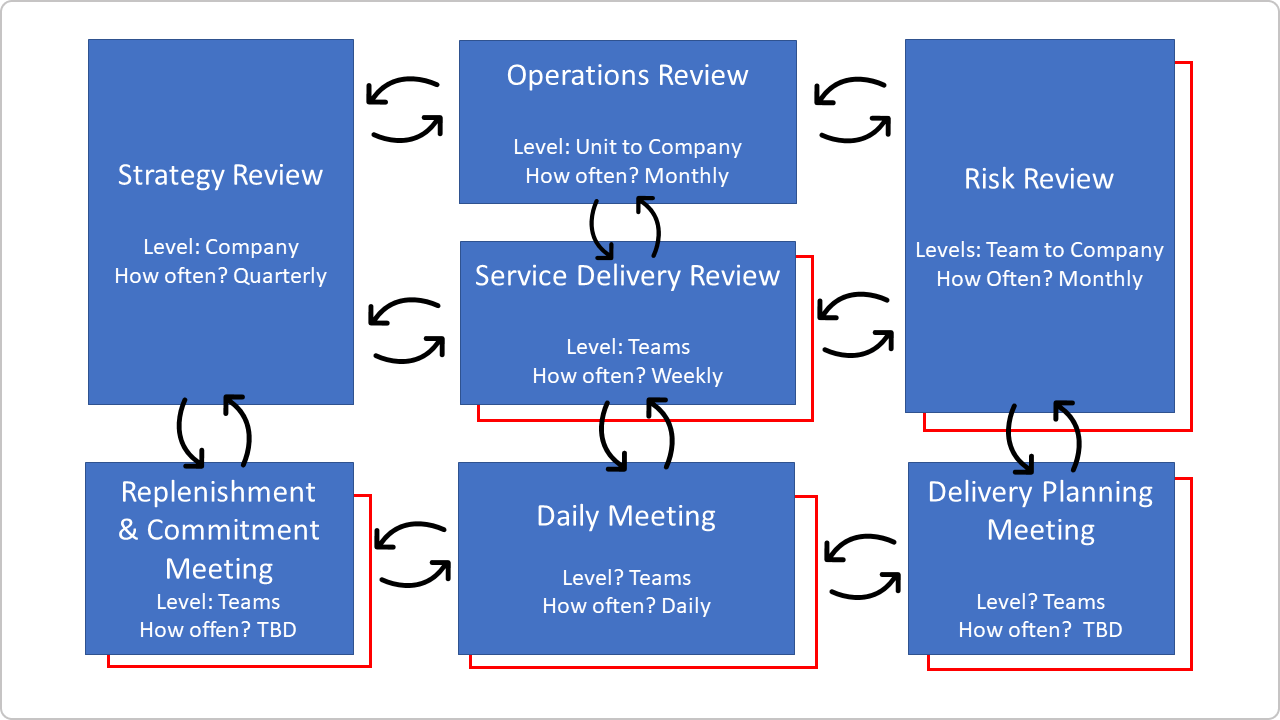 Feedback loops in Kanban
Feedback loops in Kanban

